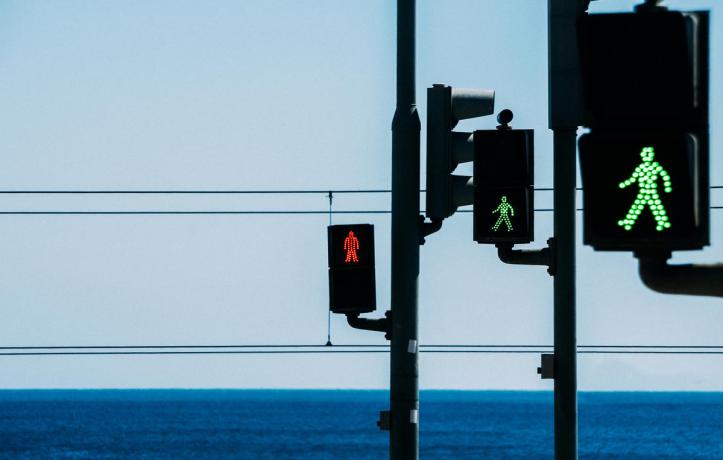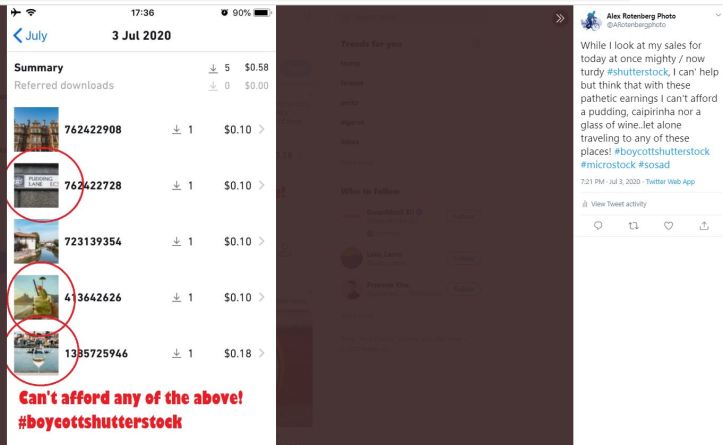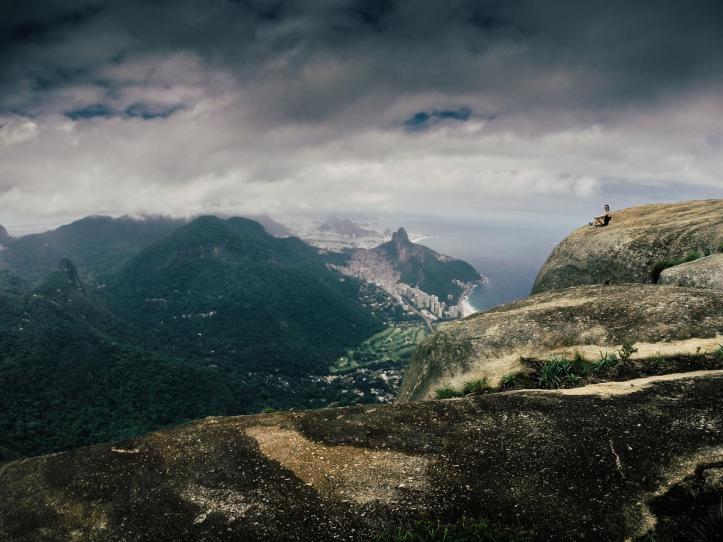Just over a year ago I published a popular post: 7 Tips on Getting Started with Book Cover Photography. Today, I’m happy to share with you an update on how I’ve been doing on this niche and some new tips on getting started / profiting from this genre.
One of my proudest achievements as a professional photographer is seeing my work published on physical book covers. I’ve been a regular contributor at Arcangel for about three years and in this time I have licensed at least a dozen physical book covers.
Click here to see my 815-image portfolio at Arcangel Images
Over a dozen book cover licenses later…
I feel that I’m still early days in this niche but heading in the right direction, especially now that regular sales are coming through. The following is a slideshow of my licensed images (10 in total and some have been repeat licenses):
Looking for inspiration?
12 sales is a drop in the ocean and I know of photographers who only specialise in book covers and have 100s of sales. Some very talented photographers, who often give me inspiration, that I would recommend following on twitter include but not limited to:
- Lyn Randle
- Birgit Tyrrell
- Laura Ranftler
- Angela
- Angela Waye
- Taina Sohlman
- Maria Heyens
- Paul Bucknall
- Stephen Mulcahey
- Richard Nixon
- Trish Mistric
- Kerem
- George Cairns
Two new sales in July!
In early July, Arcangel notified me of two further sales (one was a repeat sale), which will be reflected in my earnings report later on this month…stay tuned for the exact amounts 🙂
5 Updated tips on selling book covers
I’ve been looking at some patterns of which ones have sold and why now that I have a relatively large sample. So here they are…
Tip number 1 – Shoot more verticals (it’s statistically proven)
I mentioned this in my previous post but worth repeating and elaborating!
A total of 7 out of 10 of my sales were originally verticals, which suggests that contrary to ordinary stock where horizontals are better-sellers than verticals, in the book cover world designers really appreciate the extra top and bottom pixels to add the text(s).
The 3 sold horizontals were easily turned into verticals, such as the following original which sold recently. In this case, the designer chose to focus on the Teenage Mutant Ninja Turtles graffiti, along with the concrete roof and floor.

However, that small crop used led to perhaps some smaller resolution issues since the original horizontal was only 4142px × 2039px (~24 MB) to be begin with. The sale price was therefore smaller than average at 69.5 GBP or around USD 78 in today’s conversion.
Now, I submit both horizontal and vertical versions of the same image and let them decide but have uploaded far more landscapes (I just didn’t know for sure which sold more in the beginning). See the breakdown of dimensions below with useful status:
| Orientation | Number of images | Percentage | Sold as book cover |
| Landscape | 438 | 54 | 3 |
| Vertical | 312 | 38 | 9 |
| Square | 64 | 13 | 0 |
| Panoramic | 1 | <1 | 0 |
Tip number 2 – Add interesting people doing interesting things
So far I haven’t sold any images with people, which isn’t surprising at all considering that I don’t have so many images with people on sale at Arcangel! In fact, only about 60 out of the 815 accepted images have people.
This is something I’m trying to improve on since images with models, with strong concepts, are far more valuable to buyers in this genre. In my last article, I discussed about the girl in the red coat book cover concept / cliche.

Looking for models
Therefore, lately, I’ve worked hard to use models (which don’t require a model release as people aren’t so clearly identifiable) in my images and have the following 8 images accepted:
My goal is to soon shoot more identifiable models on a dedicated shoot (model-released). Also using period clothes/props (including that elusive red coat) and adding the required filter.
Selecting models is also something that’s quite easy-going. Unlike the world of fashion, models can be any shape, age, size…as long as they’re interesting within your defined concept! Could be that the fatter and uglier the better haha
Tip number 3 – Shoot locally!
The beauty of the book cover niche, as opposed to the bread and butter travel photography is that there’s plenty of material to shoot locally. In fact, in the above slide-show, all but one of the images were captured within 5km of my house in Portugal and one of them within 30km.
Since we’re not able / impossible to easily travel during the epidemic, shooting locally makes perfect sense, as well as a way to keep costs low. What to shoot that will sell is another matter…but you can quite easily start with interesting facades / alleyways, such as the following five recently accepted:
I mean it doesn’t even need to be “pretty”…such as the shooting a construction site:

Tip number 4 – Play the long game, it’s worth it!
Selling book covers takes a long long long time and took me a good year and 300 images until I had my first sale…but suffice to say that it’s been well worth the journey, not only for financial gain but because it’s a lot more fun than shooting boring old stock.

There’s something of a legacy aspect to book covers since these will be seen literally by millions of people who will have your image on their book cases for generations. As opposed to the micro-images which are used in a blog post (sometimes a stupid post) here and gone tomorrow, over and over.
As for financial gain, my average earnings for book covers currently stands at around net $200/sale, far superior to the 60cents/sales at the micros (and dropping at Shutterstock), although it’s a sort of apples and oranges-type comparison since there is fortunately little convergence.

Tip number 5 – Dig deep through your archives for potential images
One of the big pluses of book cover photography is that as long as an image has enough resolution and an interesting concept, the remaining technical aspects are not as important (other than enough copy space). In other words, some your blurry, grainy images from the past which are now gathering digital dust may now be suitable for book covers with enough intelligent post-processing.
These may also include images that were initially issued to microstock agencies and rejected for technical reasons, often nonsensical. Two recent examples of old images, with post-processing, captured on a friend’s old Go-Pro were recently and kindly donated to me, accepted at Arcangel, even if the resolution was lower than what they would have preferred (4800px at longest side).


Do you have any comments / questions?
Please comment below! Thanks for reading this post.
I’ll be back in a few weeks with my July detailed earnings report.
Thanks for the mention, Jamo Images.
Would appreciate if you could help me out!
Above and throughout the blog, as you can appreciate, I’ve given quite a bit of my time to help you make sense of this complicated stock industry and focus on making money. I’ve also given away earnings info on some of my best-sellers which will directly lead to those images reducing their value (how much is impossible to say).
If you feel that the information above and at other posts is useful and if you’re so included, kindly donate as much as you feel is reasonable by clicking on the following link below:
Donate Now!
About Alex
I’m an eccentric guy, currently based in Portugal (fled Madrid to escape the brunt of this nasty Coronavirus), on a quest to visit all corners of the world and capture stock images & footage, when things go back to normal (July??). I’ve devoted eight years to making it as a travel photographer / videographer and freelance writer (however, had recently go back into full-time office work to make ends meet, although been recently let go!). I hope to inspire others by showing an unique insight into a fascinating business model.
I’m proud to have written a book about my adventures which includes tips on making it as a stock travel photographer – Brutally Honest Guide to Microstock Photography



Hi Alex, thanks for sharing statistics and suggestions: it’s quite rare to find a good and generous photographer that wants to distribute his secrets… You are doing it with your blog. Well done!
LikeLiked by 1 person
Thanks Paolo! You’ve got some great pics that would lend themselves to book covers! Hope you’re well in Milan and things are getting back to normal 🙂
LikeLike
Congratulations, Alex! Great niche! I’m going to try my old 35mm slide scans and see how they do.
Steve
LikeLiked by 1 person
Thanks, Steve! Looking forward to seeing your pics up for sale 😀
LikeLike
Hi Alex, thanks for sharing your experience. Images must be exclusive or I am wrong?
LikeLike
Not necessarily as they have a Rights-Managed / Royalty-Free collection that is non-exclusive but forbidden to upload to micros. To be on the safe side, I only upload Rights-Managed exclusive to Arcangel
LikeLike
Thank You, Alex, I agree with RM exclusive, it was a safe way.
LikeLiked by 1 person
How did you get approved by them? I filled out their application form a while ago already, but I have not heard back from them. I am not sure whether that means I was not accepted, or whether it just takes a while or whether is it worth trying to re-apply with different samples? Wasn’t even sure I filled out the form correctly, because they had a few lines for smaples of my work with URLs that I used, but at the bottom it said I can e-mail them examples of my work, so that confused me.
LikeLiked by 2 people
Same, waiting for a reply, wondering if I typed in my email correctly.
LikeLiked by 1 person
I got accepted, its a good feeling uploading creative work that has a chance of a decent return.
LikeLiked by 1 person
Excellent! I totally agree 🙂 Best of luck with sales
LikeLike
You’ll receive a response soon. Any luck as it’s already been a month since you wrote this message.
LikeLike
Alex, thank you for sharing so openly your experiences. Your blog is very insightful and I wish you continued success.
LikeLiked by 1 person
Thanks Stuart 🙂 Wish you success as well!
LikeLike
Thanks for the info Arcangel does sound interesting…… Am I right in that, once accepted as a contributor (if this does indeed happen), the first submission has to be 40 images? This seems quite daunting for a noob who wants to do more with their photos than “give them away” to Shutterstock and the other micros.
LikeLike
That’s correct
LikeLike
Hi Alex, first of all, my respect for your great blog. I wonder if I can ask you a question.
It’s not very easy for me to understand in Arcangel where to find my sold photographs. I know that I’ve sold several images (I’ve received emails on this), but I can’t find on the website where is possible to have statistics. Please, could you give me a suggestion on where to look for selling statistics?
Thank you!
Paolo
LikeLiked by 1 person
Hi Paolo, nice to hear from you!
Sales reports are provided on the first weekday of every month (if there is a sale on the prior month).
Best to email them in and ask if there have been any sales, they have an excellent CS.
I also don’t have any statistics, unfortunately.
All the best – Alex
LikeLike
I have the same question! How do you track down where your image has been used?
LikeLike
Arcangel send me a statement at the beginning of every month with the book title and author, then it’s easy to find on Google/Amazon
LikeLike
Alex, curious about your thoughts on stylized processing of images vs. natural colours? Are you thinking that modern / trendy looks in these types of photos sell better than (or are more likely to be accepted) than images with natural colours?
LikeLike
Hi Jeff,
Thanks for your question.
I don’t have enough of a sample of sales to make any sort of conclusive judgement. However, from my own limited sales (10 book covers on Arcangel) and from research, they prefer a soft-touch post-processing. It seems to be a case of “less is more” to leave enough room for the designer to do finish the work, so I lean on going for more natural colours.
As for what is accepted, no matter what I do, my acceptance ratio hovers around 20-30%.
Best regards,
Alex
LikeLike
Matylda Laurence…many thanks Alex for adding the link to your recent Shutterstock post…when I began photography almost by default by the curved ball effect in life you will probably remember how agencies worked in actually helping the photographer with getting their images seen by editors. During this time one of mine became a book cover (girl playing her fiddle in a pub jam night) and several in books and magazines etc from which I get an annual royalty from DACS. Since the downward spiral of microstock in general and the up surge of free content and everyone having a phone your so interesting blog put me in mind of my back catalogue of images many of which like you lend themselves to book covers. Fortunately too my models some over 20 years ago now did sign releases so the seed of my changing course is growing in this new direction having pulled out a starter pack to offer Arcangel. The images you have posted are just the sort of thing that would catch my eye and totally agree what is in our own backyard is often missed possibly due to familiarity. Regards Matylda
LikeLiked by 1 person
Hi Alex!
Thanks very much for your valuable info! I sent my IG account as “samples” of my photography. Am now left wondering, should I have spent time to carefully select certain images, and “process” them? But I want to showcase the type of photography I do, the style, subject, composition, and so on …
If I were to try again, and send them more “tailored” examples, would they take it that the samples are “submission-ready”?
I have been shortlisting images from my extensive library, and I feel many of them could be submitted to both Fine Art America and Arcangel as well. And some of these images already appeared in my IG. Am feeling kinda conflicted over the “exclusivity” of the submissions to Arcangel, albeit RF, the photos still should not appear in FAA I’d assume.
Any advice?
Regards,
Ling
LikeLiked by 1 person
No conflict between FAA and Arcangel since FAA you’re technically not licensing images…it’s selling personal prints for non-commercial usage.
Best of luck with your application!
Alex
LikeLike
Hi Alex, thank you so much for your interesting blog. I was accepted into Arcangel a few weeks ago and I realized that when I upload a group of photos ina batch they only approve one, but when I upload them one at a time it is much easier for them to be approved. Does the same thing happen to you?
Best regards
LikeLike
You’re welcome, Juan.
Never had an issue, big batch or small batch, my approval rating remains around the same of about 25%.
All the best,
Alex
LikeLike
Thank a lot Alex! I applied to Arcangel and now I am in! lot of fun. I wrote on my blog about and cited you.
https://luisafumi.com/blog/2020/09/27/my-first-images-at-arcangel/
Ciao, take care, stay safe.
LikeLiked by 1 person
Thank you Alex! I was getting frustrated making 50 cents selling stock photos! I did not know about the book cover possibilities. I have sent a link to my FAA site to Arcangel and keeping fingers crossed. I usually do flower and garden photography, but the book covers will give me a chance to branch out (pun intended!!)
LikeLike
Good luck! Hope you get in, they’re a nice agency and sales are good prices (my average is $250/sale)
LikeLike